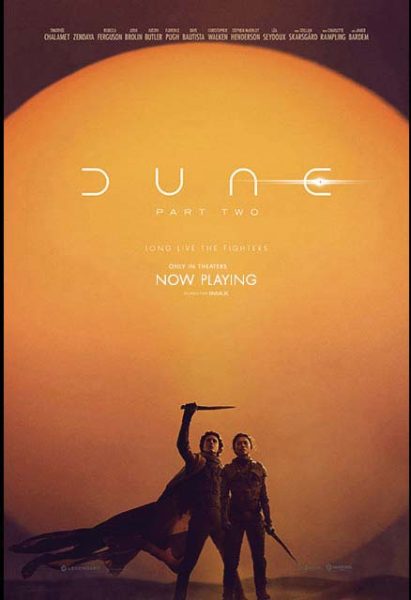“No Time to Die” review: An epic and fitting end
After months of delays due to the COVID-19 pandemic, the 25th and latest James Bond movie “No Time to Die” has finally arrived. Featuring Daniel Craig’s final performance as the outwardly suave British secret agent with a tortured inner psyche, it serves as an expansive and thrilling tribute to him and the unique style he has added into the iconic role.
The film follows Bond as he retires from British foreign intelligence service (MI6) after the events of the 2015 film “Spectre.” Now living in seclusion in Jamaica, he is contacted by his CIA counterpart Felix Leiter (Jeffrey Wright), who asks for his help in tracking down a kidnapped MI6 scientist. As Bond follows the trail, he comes back to an MI6 that has moved on without him, meeting the highly capable agent Nomi (Lashana Lynch), who has taken the 007 title in his absence. He also finds a formidable foe in terrorist leader Lyutsifer Safin (Rami Malek), who is connected to his estranged love interest Madeleine Swann (Lea Seydoux).
Slowly but surely, “No Time to Die” unfolds in an equally thrilling and somber manner. Director Cary Joji Fukunaga is faced with the herculean task of dealing with the bloated mess that is “Spectre,” while also carrying out Craig’s last outing as Bond in spectacular fashion. And judging by the film’s whopping 163 minutes, he fires on those two fronts with differing but no less exciting results.
On the visual look of the film, Fukunaga adds a robust sensibility. We see Bond hopping across the world, whether he teams up with CIA agent Paloma, played by Craig’s “Knives Out” co-star Ana de Armas, or infiltrating Safin’s appropriately imposing island lair. Aided by gorgeous cinematography from Linus Sandgren, Fukunaga’s direction of the action sequences is impressive. From Bond’s lengthy chase from Spectre agents in Matera to the kidnapping of the MI6 scientist, Fukunaga’s boldly visual direction makes the stylish look of “No Time to Die” worth it in some aspects.
In many ways the film feels like a final act to the serialized story of Craig’s Bond, undoubtedly adapted from the MCU’s flair for interconnecting story lines. Where early Bond films are episodic in form, the rebooted films starting with 2005’s “Casino Royale” add an evolving story for the secret agent. Hiding behind a trained killer is an emotionally tormented man dealing with love and loss, especially personified in Eva Green’s Vesper Lynd. Four films later she still haunts him, even as Bond has his sojourn with Madeleine in Matera. “No Time to Die” also does its best to reconcile its story with the shocking yet unwieldy revelation in “Spectre” that villain Ernst Stavro Blofeld (Christoph Waltz) has always been the author of Bond’s pain.
For all its attempts to conclude the story of Craig’s Bond, “No Time to Die” inevitably plays out as a greatest hits package for the franchise. Big set pieces? Check. Cool gadgets? Check. A thickly accented villain prone to monologuing? Check. The film’s burgeoning runtime ultimately does it no favors, as it becomes saddled with a generic plot involving world annihilation that is also straight out of the MCU. Even if Malek did his best as Safin by calling back to the franchise’s equally menacing villains like Dr. No, he comes off as yet another offshoot of the big bad villain who wants to wipe out the earth. His connection to Madeleine also comes across as a knowing wink to navigating the increasingly impenetrable lore of Craig’s Bond, which barely scratches the surface.
But then again, one doesn’t always watch Bond films for the plot, and that’s fine. Tracing the mythology of the iconic secret agent from Connery and Moore to Brosnan and now Craig, the franchise has always prided itself on escapism. In particular, this century’s Bond has a lot more nuance in response to the changing geopolitical landscape, even if the films do not exactly delve into that aspect and instead lean more towards creating increasingly huge set pieces.
With Craig stepping down from the role, Fukunaga has managed to go for broke with this film. “No Time to Die” may strike the seasoned viewer as atypical of standard Bond fare, as the director takes risks in the same way that Rian Johnson redefined the Star Wars mythology with 2017’s “The Last Jedi.” For all its faults, the film sends off Craig’s Bond in a stirring way that will leave the audience thinking for a while. As the world waits for the next James Bond to fill the huge shoes that Craig has left behind, let the viewer bask in how the franchise has made it this far.


Ver Lumod is a digital filmmaking junior. He works as Reviews Editor for The Maroon. Ver has also written and directed short films. He regularly watches...












Bond, James Bond • Nov 19, 2021 at 9:47 pm
Very well rounded approach, but the lack of mentioning the many problems I. The wardrobe department can’t be overlooked. Are we supposed to believe that James Bond wears Blue Jeans? I don’t by it or that he would spend retirement fishing instead of hanging out at a country club enjoying the vices he loves. The other issue in the film and more the biggest of all are the jokes, they constantly make dumb jokes and play more towards as you put ur Cloning the MCU instead of playing off of the witty humor and innuendos that it’s predecessors had.